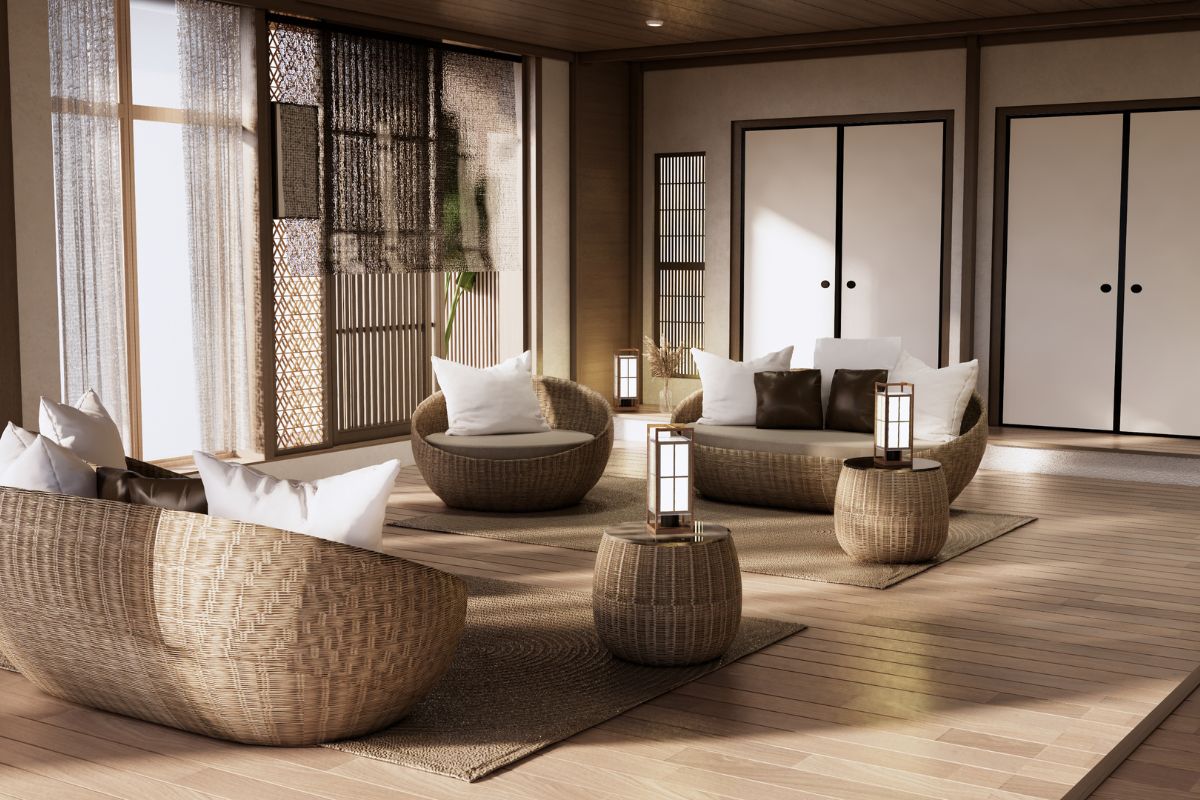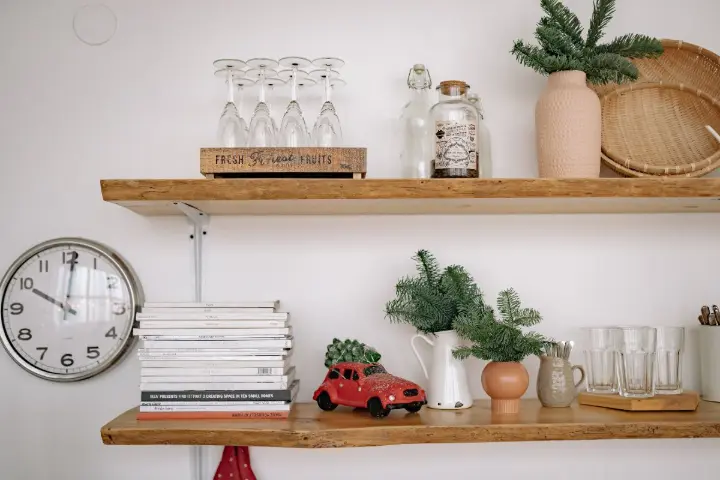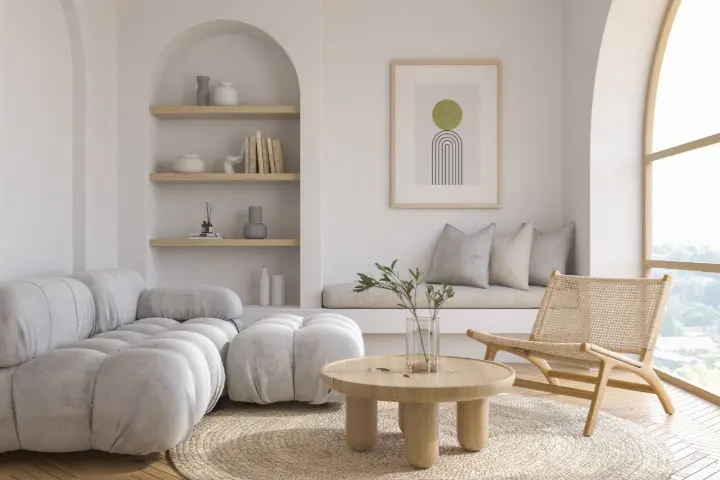Does your home feel a bit chaotic lately? Looking to tidy up while embracing simplicity and tranquility? You’ve come to the right place! Japandi—where Japanese minimalism meets Scandinavian warmth—is here to transform your space into a peaceful, stylish haven. This design trend is all about calm, clean lines, neutral tones, and natural materials. Think of it as the perfect combination of Zen-inspired simplicity and functional Scandinavian charm.
In this guide, we’ll break down everything you need to know about Japandi style—how to incorporate it into your home, tips for getting it just right, and some must-have products to help you on your way.
Let’s get started!
What is Japandi?

Japandi is a design style that blends two distinct yet complementary styles: Japanese minimalism and Scandinavian functionality. While Japanese interiors are centered around simplicity, nature, and elegance, Scandinavian design brings in a practical, cozy vibe with clean lines and natural materials. Japandi is where these two styles come together, focusing on creating serene and functional spaces that feel warm yet minimalist.
At its core, Japandi is about balance. It embraces the beauty of simplicity without sacrificing comfort. If you love spaces that feel peaceful and inviting, yet never cluttered or overwhelming, then Japandi might just be the perfect fit for your home.
Key Elements of Japandi Design

To bring Japandi into your home, there are a few key elements you’ll need to focus on. Let’s dive into these fundamental features:
1. Minimalism Meets Functionality
Japandi design is all about simplicity, but it’s also highly functional. The Japanese minimalist approach encourages a clutter-free environment, where every item has a purpose. Scandinavian design focuses on practical, multi-functional furniture that serves a specific need. Combining these elements ensures a space that’s not only peaceful but also practical.
Pro Tip: Look for furniture that is simple and functional. A wooden coffee table with hidden storage or a modular sofa that adapts to different needs are perfect examples of Japandi-inspired pieces.
2. Neutral Color Palette
In Japandi, colors play a vital role. The palette is typically neutral, using shades of white, beige, gray, and soft browns. These colors help create a tranquil atmosphere, perfect for relaxation. Adding subtle accent colors, like muted greens or soft blues, can inject personality without disrupting the calm vibe.
Pro Tip: Incorporate texture into the neutral palette by mixing fabrics like linen, wool, and cotton, which will add depth and visual interest to your space.
3. Natural Materials & Textures
The materials you choose are what truly bring Japandi to life. Wood, particularly light oak, ash, and walnut, is the backbone of Japandi design. It creates a connection to nature and introduces warmth into the space. Bamboo, stone, and cotton also make regular appearances, contributing to the natural aesthetic.
Pro Tip: For a Japandi-inspired living room, opt for furniture made of light or dark wood and combine it with accessories like bamboo blinds or stone sculptures.
4. Craftsmanship and Quality Over Quantity
In Japandi, it’s not about having lots of things—it’s about having fewer, higher-quality items. Each piece in your home should feel purposeful and well-crafted. Look for furniture and decor that showcase fine craftsmanship and will stand the test of time.
Pro Tip: Focus on one statement piece in each room, like a handmade vase, a unique wood chair, or a carefully selected art piece that adds character and style.
👉 Browse Handmade Ceramic Vases
How to Achieve Japandi in Every Room

Now that you’re familiar with the key principles of Japandi design, let’s talk about how to bring it into your own home. Here’s a room-by-room guide to help you incorporate Japandi style.
1. Japandi Living Room
Your living room is a key area for embracing Japandi. Choose minimalist furniture like a low-profile sofa or armchairs in neutral tones. A wooden coffee table in either light or dark wood creates a cozy yet sophisticated focal point. The goal is to keep the space uncluttered, while ensuring that it still feels warm and inviting.
Pro Tip: Opt for wooden flooring or area rugs in neutral tones, like beige or light gray, to keep the aesthetic simple and grounded.
2. Japandi Bedroom
In the bedroom, Japandi is all about creating a serene sanctuary. Start with a low, wooden bed frame made from natural materials. Pair it with simple linens in neutral colors, such as soft white or light gray. A minimalist nightstand and a cozy, textured throw complete the look.
Pro Tip: Keep the decor minimal but meaningful—select one or two carefully chosen items, such as a beautiful lamp or a serene piece of art, to add personality without crowding the space.
3. Japandi Kitchen
The Japandi kitchen combines both style and practicality. Opt for cabinetry made from light or medium-toned wood, or a neutral-colored material like matte black. Open shelving works well in Japandi kitchens to display carefully curated dishes, glassware, or plants.
Pro Tip: Choose kitchen tools made from bamboo, such as bamboo cutting boards or utensils, for a natural touch that complements the design style.
4. Japandi Bathroom
In the bathroom, Japandi focuses on creating a spa-like, peaceful environment. Simple wooden storage pieces, a stone sink, and a neutral color scheme help achieve this. A bamboo or cotton bath mat adds a touch of natural luxury.
Pro Tip: Incorporate plants, like a small bamboo plant or a succulent, to bring some greenery into the space.
5. Japandi Entryway
Your entryway is the first impression of your home, so make it welcoming and serene. A wooden console table, a few minimalist hooks for coats, and a neutral-colored rug will set the tone.
Pro Tip: Keep your entryway clutter-free by using sleek, functional storage solutions like baskets or a storage bench.
Final Touches to Complete the Japandi Look

Now that you've established the foundation of your Japandi-inspired home, it’s time to add those finishing touches that truly make the space your own.
1.Lighting for Japandi Homes
Lighting in Japandi interiors is soft and natural. Look for paper lanterns, minimalist pendant lights, or sleek wooden lamps to complement the design. The goal is to keep the light warm, calming, and diffused.
Pro Tip: Add layers of light with floor lamps or wall sconces to create a relaxed ambiance in the evening.
2. Plants and Greenery
Adding plants to your Japandi home helps bring life and freshness into the space. Go for low-maintenance plants like bamboo, ferns, or peace lilies. Choose simple ceramic pots or wooden planters to keep the aesthetic consistent.
Pro Tip: Create a vertical garden if you're tight on space—these work especially well in kitchens, bathrooms, or along hallway walls.
👉 Explore Vertical Gardening Kits
Japandi Design: Ready to Transform Your Space?

With its clean lines, natural materials, and serene color palette, Japandi is the perfect design style for creating a peaceful and functional home. Whether you want to transform your entire space or just add a few key elements, this style has the power to create a calming retreat that’s both stylish and practical.
Remember, it’s all about balance: the beauty of simplicity combined with the warmth of natural materials. So go ahead, embrace Japandi, and create a space that feels like an oasis of peace and style.
This post contains carefully selected links to products we love. If you choose to purchase through them, we may earn a small commission at no extra cost to you.
So, what are you waiting for? Start transforming your space with Japandi today and create the calming, functional home you deserve.
Don’t forget to check out more inspiration on Pinterest with Decormate!